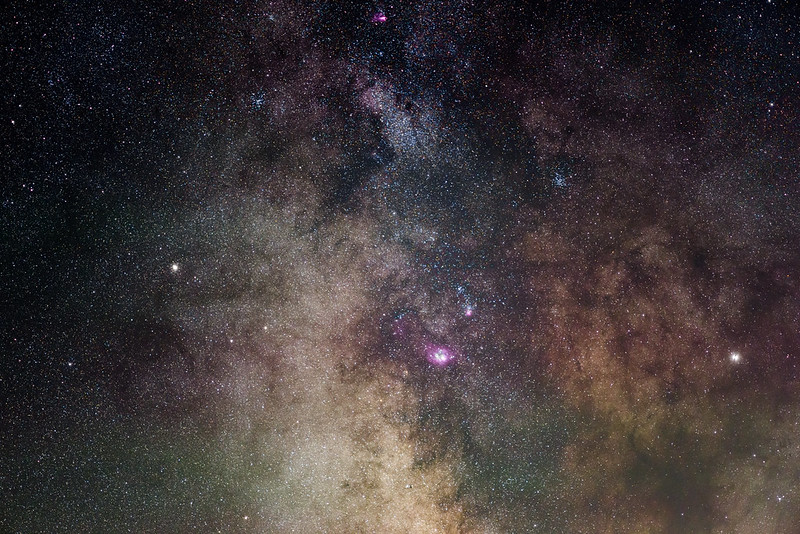 Originally posted by reivax
Originally posted by reivax 
2) Astrotracer. Will this work on longer focal lengths? Or are there focal lengths I should stick to?
Here's an astronomer's take on this:
If the system is properly calibrated (a big IF, perhaps), the focal length should not matter - depending on how astrotracer really works.
Why do we need astrotracer (or any other tracking system)?
Well, as you all know the earth rotates, so the stars seem to move. But things are a bit more complicated.
How can we compensate for the rotation? A simple attempt involves moving the camera (or, equivalently, just the sensor) along the apparent motion of the sky. However, unless the compensating motion is around the rotation axis of the earth, the field of view will also rotate. This rotation occurs because the stars actually move at a different linear rate across the field of view because they are moving on circular paths with different effective radii. Perhaps this can be best envisioned by thinking of a star at the celestial equator and one at the celestial north pole (i.e. Polaris , more or less). If you tried to take a picture encompassing both stars (a moderately wide angle lens could easily do this), the star at the equator would move during the exposure, while Polaris would stand still. If you tried to follow the equatorial star by moving your camera along with the star, then Polaris would get streaked out.
A normal equatorial tracking system does exactly the compensating motion you need, so no field rotation, and clearly, any focal length lens is OK.
Since your camera is probably mounted on a tripod instead of a tracking mount, things get a bit more complicated. The simplest compensation is to move the camera/sensor left-right/up-down. This allows you to track the center of the field, but does not correct for field rotation.
The amount of field rotation is proportional to distance from the center of the field as the center is tracked. This is an important fact. It means that the effect on a photograph will have the same fractional effect independent of focal length! This is because the field of view depends on focal length in exactly the same way. Alternatively, think of the longer focal length image as a crop of the central part of a wide angle image - blown up to the size of the original. Any rotational amount will be the same angular amount about the center in any crop.
So, if the astrotracer applies the necessary field rotation*, you should be fine with ANY FOCAL LENGTH LENS. And, because of the scaling effect noted above, exposure lengths can be the same for all lenses, as well.
* while I could not find any definitive statement about astrotracer rotation, the K1 is able to rotate the sensor. Camera specs quote for horizon correction: “correction up to 2 degrees.” (P. 117 of manual)
For some more info on field rotation, see
RASC Calgary Centre - Field Rotation
All modern large (mirrors more than a few meters) professional optical telescopes use az/el mounts (like your tripod). They all have cameras which apply the necessary field rotation. So this really can work for any size optical systems - if it’s done right!








 Similar Threads
Similar Threads 





















